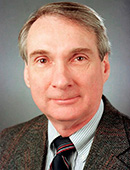0 0 0

Julien Clinton SPROTT
University of Wisconsin-Madison
Department of Physics
Department of Physics

Julien Clinton Sprott has studied the heating and confinement of plasmas, especially electron and ion cyclotron resonance heating in magnetic mirrors and toroidal confinement devices; extraterrestrial plasmas and cosmic rays; nonlinear dynamics; chaos; fractals; complex systems; numerical simulation; time-series analysis; physics education. Most of his professional career has been devoted to experimental plasma physics with an application to the development of controlled nuclear fusion. Fusion promises an inexhaustible supply of energy, and its attainment would revolutionize society. This interest began in graduate school where his studied electron cyclotron resonance heating of plasmas confined in a toroidal octupole magnetic field. This interest continued in subsequent employment at the Oak Ridge National Laboratory where his worked on an electron cyclotron heated mirror device (ELMO) and on the design of its toroidal successor (Elmo Bumpy Torus). Upon return to the University of Wisconsin, his continued and expanded these studies to include ion cyclotron resonance heating in octupole and tokamak devices. His played major roles in the design and construction of several magnetic confinement devices, including Tokapole II, a toroidal divertor tokamak, and MST, a reversed field pinch, at the University of Wisconsin. His interests were in optimizing the performance of these devices. Since 1989 his work has been mostly in nonlinear dynamics and chaos. I developed several computer programs to demonstrate chaos and to perform time–series analysis of experimental data with the aim of clarifying the underlying dynamics. These studies may have application to plasma turbulence and anomalous transport, but they are of much more general interest in fields as diverse as economics, ecology, meteorology, and electrical engineering. His have discovered a variety of especially simple chaotic systems and electrical circuits and done statistical analyses of large collections of numerically simulated chaotic systems. His have studied the chaotic and self–organizing properties of large artificial neural networks and other high–dimensional dynamical systems. In 1984 his began a program called The Wonders of Physics, aimed at generating interest in science and encouraging students to consider scientific careers. This effort has included public presentations, workshops, development of educational software, videos, and a lecture kit, as well as the training and supervision of graduate students and teachers in employing these techniques.
CONTRIBUTI









